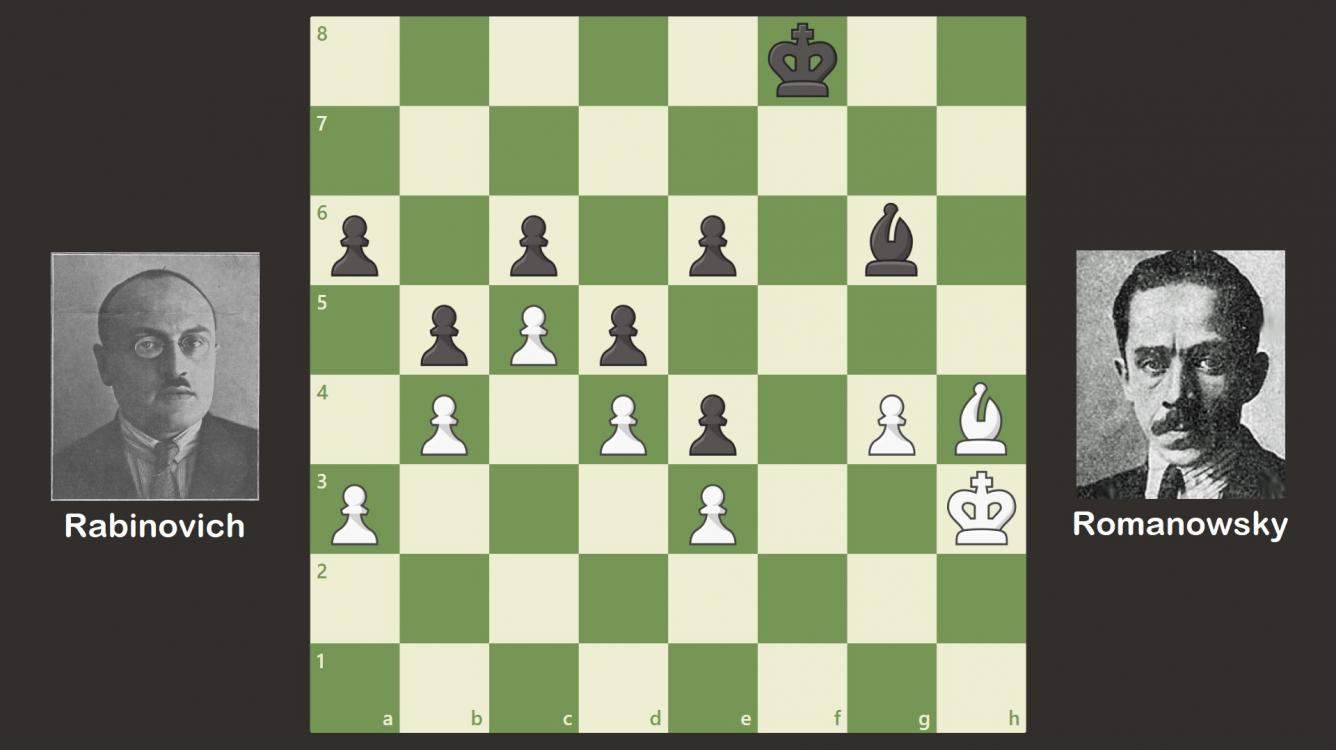
Weak Squares and Outposts Part 2 - Optimal Utilization
Sometimes weaknesses will lie dormant until the end of the game, when the King becomes an important attacker of those latent weaknesses. The following demonstrates just such an example. Romanovksy, who finished second behind Botvinnik in the 1934 Leningrad Tournament, was unable to defend his weaknesses in the endgame against Rabinovich.
It should also be noted that, in most cases, weak squares near or in the center are more useful than weak squares on the edge of the board.
Furthermore, it is very important to remember that what makes a square really weak is the possibility of using it. For this reason, weak squares that are attacked by our own pawns make good outposts.
In other words, an outpost is a weak square that has been occupied by one of our own pieces which is supported by one of our pawns. (Such as d5 above). If a weak square is inaccessible to our pieces, i.e none of our pieces can reach the weak square to occupy it and make it an outpost, then the weakness of that square is unimportant and irrelevant in the overall evaluation of the game.
Knights adore the center outposts. From their protected position they can attack on both flanks, and easily reach almost any square. In the following game we see how an out-posted Knight proves superior to a restricted bishop.
Caution must be exercised when considering the occupation of a weak square in an attempt to establish an outpost. If the weakness of the square is mitigated by the presence of a defender (as in the example below), that defender might well need to be removed before occupying the weak square.